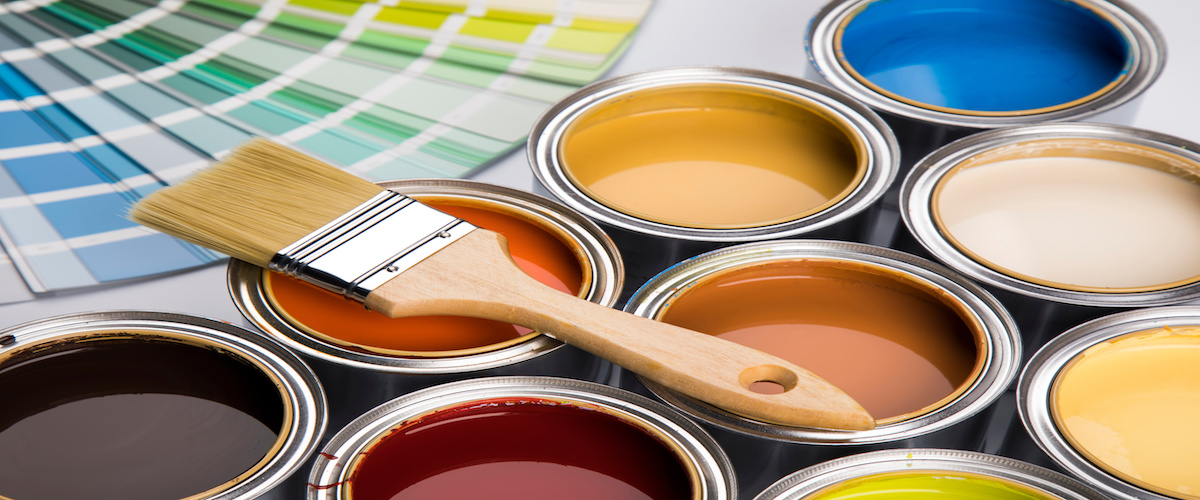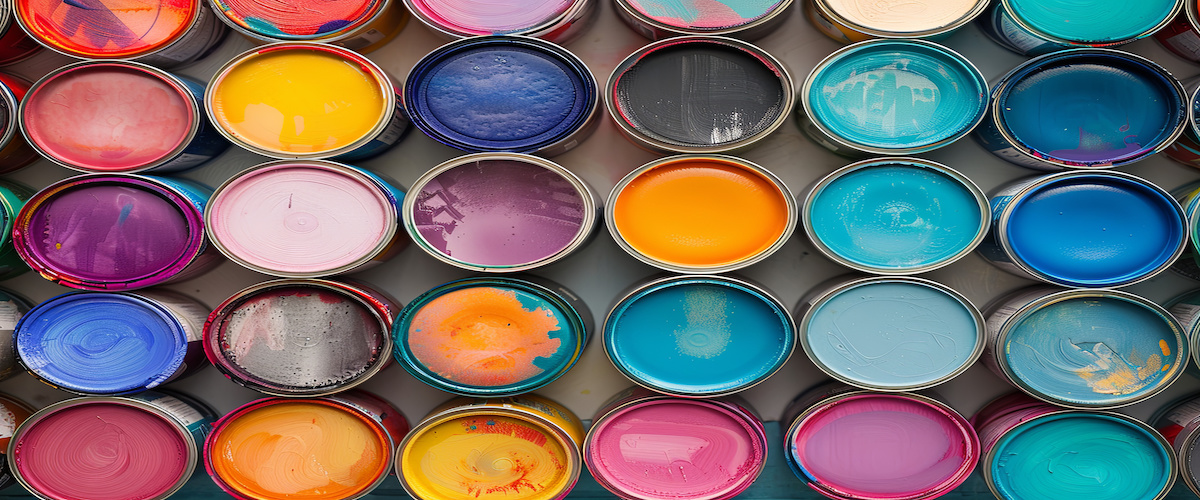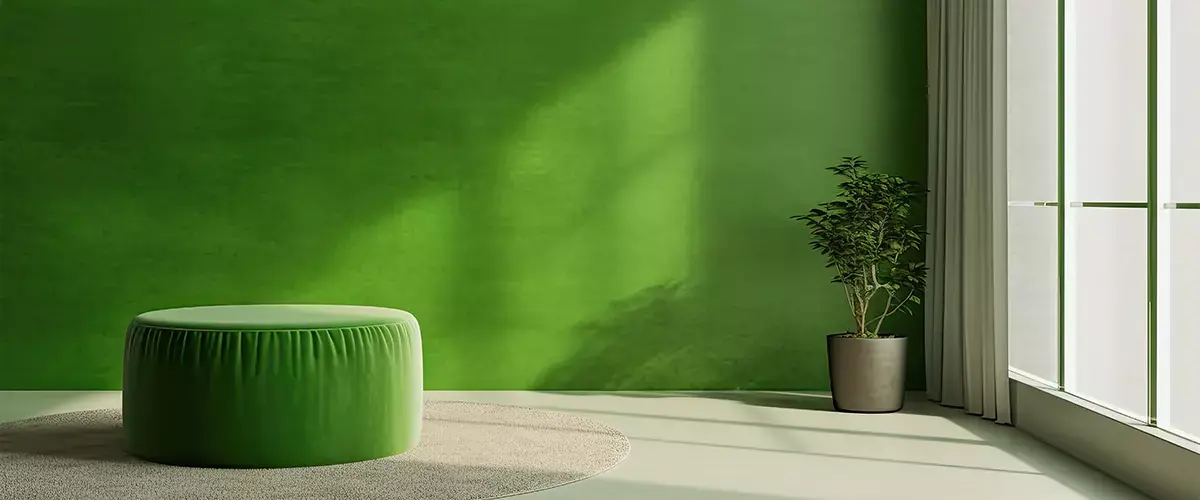A Simple Guide To Flat vs. Satin vs. Semi-Gloss Exterior Paint
When it comes to choosing the right exterior paint finish for your home, the options can be a bit overwhelming. Flat, satin, and semi-gloss are among the most popular finishes, and each one has its pros and cons. At New Direction Painting, we want to make sure you have all the information you need to make the best choice for your home.
Let’s break down the differences between these finishes in simple terms!

Flat Finish
What is it? Flat paint has a non-reflective, matte finish that gives your home a smooth and subtle look. It’s often used on older homes or surfaces that have imperfections because it hides flaws well.
Pros:
- Hides Imperfections: If your exterior has a lot of bumps, cracks, or uneven spots, flat paint is great for masking them.
- Smooth Appearance: Gives your home a classic, understated look.
- Cost-Effective: Typically less expensive than other finishes.
Cons:
- Less Durable: Flat paint is more prone to scuffing and doesn’t hold up as well against weather and wear.
- Harder to Clean: Dirt and stains are more difficult to remove, which can be a drawback for high-traffic areas or homes in dusty environments.
Satin Finish
What is it? Satin paint has a soft sheen that’s not too shiny but still provides a bit of a glow. It’s one of the most popular choices for exterior paint because it offers a good balance between durability and appearance.
Pros:
- Versatile: Works well on most exterior surfaces, from siding to trim.
- More Durable: Satin is more resistant to weather and fading than flat paint, making it a better option for areas exposed to the elements.
- Easier to Clean: Dirt can be wiped off more easily, so it’s ideal for areas that need regular cleaning.
Cons:
- Shows Imperfections: Because of its slight sheen, satin paint can highlight flaws on the surface, so it’s important to make sure your walls are in good condition.
- Moderately Priced: Satin is usually more expensive than flat paint, but less costly than semi-gloss.

Semi-Gloss Finish
What is it? Semi-gloss paint has a noticeable shine that reflects light, giving your home a polished look. It’s commonly used for trim, doors, and areas that need to stand out or require more protection.
Pros:
- Highly Durable: Semi-gloss is tough and resistant to moisture, making it perfect for areas like window sills, shutters, and doors.
- Easy to Clean: Dirt and grime wipe away effortlessly, so your paint job stays looking fresh for longer.
- Enhances Features: The shine draws attention to architectural details, making them pop.
Cons:
- Highlights Imperfections: Like satin, semi-gloss will show every little bump and crack, so it’s best used on smooth, well-prepared surfaces.
- Higher Cost: Semi-gloss is generally the most expensive of the three finishes.
Which should you choose?
Choosing the right finish depends on your specific needs and the look you want to achieve:
- Flat is great for older homes or surfaces with imperfections that you want to hide.
- Satin is an excellent all-around choice that offers durability and a balanced appearance, making it ideal for most exterior surfaces.
- Semi-gloss is perfect for trim, doors, and areas that need extra protection or where you want to highlight architectural features.
| Finish Type | Pros | Cons |
|---|---|---|
| Flat |
|
|
| Satin |
|
|
| Semi-Gloss |
|
|
Why Surface Preparation Matters
No matter how high-quality your paint is or which finish you choose, if the surface isn’t well-prepared, the final result won’t meet your expectations.
Surface preparation involves cleaning, sanding, and priming the exterior surfaces before applying the paint. This step ensures that the paint adheres properly and lasts longer. Here’s why it’s so important:
- Better Adhesion: Properly prepared surfaces allow the paint to adhere better, reducing the chances of peeling, chipping, or blistering over time.
- Smooth Finish: Preparing the surface by filling cracks, sanding rough spots, and removing old paint results in a smoother, more professional finish.
- Increased Durability: When the surface is primed and ready, the paint job is more durable, standing up better to weather and wear.
- Enhanced Appearance: A well-prepared surface ensures that your chosen finish – whether flat, satin, or semi-gloss – looks its best, without any imperfections showing through.
Take The Professional Route
When it comes to painting your home’s exterior, the quality of the installation is just as important as the type of paint you choose. While DIY painting might seem like a cost-effective option, professional installation ensures a flawless, durable finish that stands the test of time.
Benefits of Professional Installation
- Expert Knowledge: Professional painters understand the nuances of different paint types and finishes, ensuring that the right products are used for each surface.
- Proper Preparation: Pros know how to thoroughly prepare surfaces, which is key to a long-lasting paint job. They’ll handle everything from cleaning to priming, making sure the paint adheres properly.
- Efficiency: Professional painters have the experience and tools to get the job done quickly and efficiently, minimizing disruption to your daily life.
- Quality Results: With a professional, you’re more likely to get that smooth, even finish that can be difficult to achieve on your own. They know the techniques that prevent drips, streaks, and uneven coverage.
- Long-Term Savings: A properly installed paint job can last for years, reducing the need for frequent touch-ups or repaints, which can save you money in the long run.

FAQ for Flat vs Satin vs Semi-Gloss Exterior Paint
Flat paint is the best option for hiding surface imperfections because it has no sheen and doesn’t reflect light, making flaws less noticeable.
Yes, absolutely! Satin paint is indeed a good choice for exterior surfaces because it’s durable, easy to maintain, and can handle various weather conditions better than other finishes. Its slight sheen also adds a smooth, attractive finish that works well in many outdoor settings.
Semi-gloss paint is ideal for high-traffic areas and trim. It’s highly durable, moisture-resistant, and easy to clean, making it perfect for doors, windows, and shutters.
It’s not recommended. Flat paint is less durable and prone to chipping and staining, so it’s better suited for less exposed areas.
Ready to Transform Your Home’s Exterior?
Choosing the right paint finish is just the beginning. At New Direction Painting, we don’t just apply paint; we bring your exterior painting vision to life, exactly as you imagine it. Whether you prefer flat, satin, or semi-gloss, our team is here to help you make the best choice and achieve flawless results.
Contact us today at (615) 673-5773 to schedule a consultation and give your home the vibrant, fresh look it deserves!
